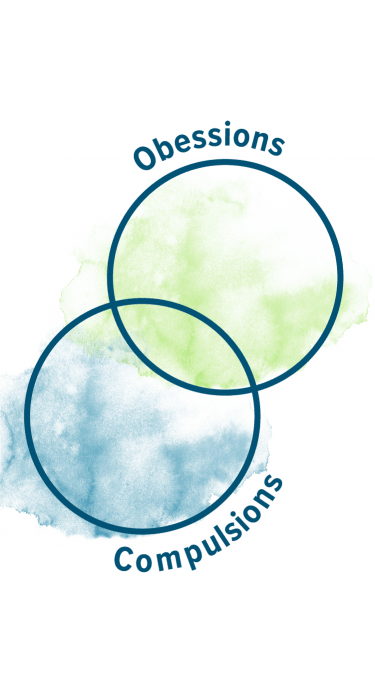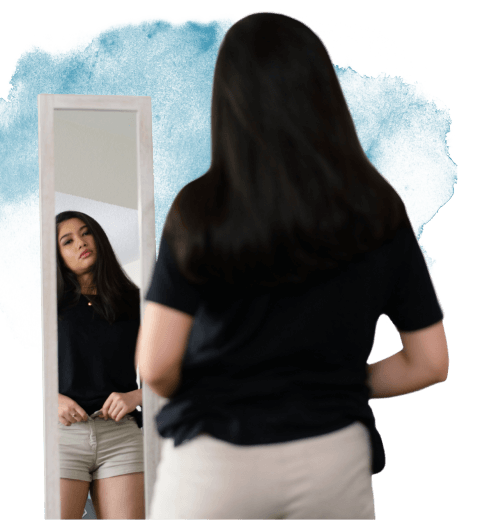Obsessive-Compulsive Disorder
Characteristic Symptoms
The Obsessive-Compulsive Disorders are characterized by recurrent thoughts (obsessions) or rituals (compulsions) that people feel they cannot control.

OBSESSIONS
Obsessions are persistent thoughts that one recognizes as intrusive and inappropriate and that result in marked distress. Common obsessions include fear of germs or contamination, unwanted forbidden or taboo thoughts involving sex, religion, and harm, aggressive thoughts towards others or self, and thoughts of needing to have things symmetrical or in a perfect order.
COMPULSIONS
Compulsions are rituals that are performed to try to prevent or stop the anxiety related to the obsessions. For instance, an individual with this type of disorder may be obsessed with germs and dirt, constantly fearful of contamination. In an attempt to deal with his fear, he washes his hands over and over, hundreds of times throughout the day. Most people with this condition recognize that what they are doing is senseless, but they cannot stop.
Types of Obsessive-Compulsive Disorders
A diagnosis of OCD requires the presence of obsessional thoughts and/or compulsions that are time-consuming (more than one hour a day), cause significant distress, and impair work or social functioning.
OBSESSIVE-COMPULSIVE DISORDER (OCD)
Obsessive-Compulsive Disorder (OCD) is characterized by unwanted and disturbing thoughts, images, or urges (obsessions) that cause anxiety or discomfort, which the individual then tries to reduce by engaging in repetitive behaviors or mental acts (compulsions).
BODY DYSMORPHIC DISORDER
Body Dysmorphic Disorder is characterized by obsessional thinking about one or more perceived defects or flaws in one’s appearance. The individual may feel so ashamed and anxious because of the “flaw” that they avoid social situations.

HOARDING DISORDER
Hoarding Disorder is a persistent difficulty parting with possessions because of a perceived need to save them. A person with hoarding disorder experiences distress at the thought of discarding items, resulting in an excessive accumulation of items.
TRICHOTILLOMANIA
Trichotillomania is characterized by recurrent, irresistible urges to pull hair from the scalp, eyebrows, or other areas of your body, despite trying to stop.
EXCORIATION DISORDER
Excoriation Disorder, also called Dermatillomania, is characterized by repeated, compulsive picking at one’s own skin causing lesions.
Prevalence and Age of Onset
The lifetime prevalence of OCD is estimated to be 2.3 % of the population. OCD usually begins before age 25 years and often in childhood or adolescence. Females are affected at a slightly higher rate than males in adulthood, although males are more commonly affected in childhood.
BODY DYSMORPHIC DISORDER (BDD)
- BDD is estimated to occur in 1.7% to 2.4% of the population.
- The median age of onset for BDD is 15 years with males and females affected equally.
HOARDING DISORDER
- Epidemiological studies suggest 2-5% of the general population presents with problematic hoarding and symptoms often first emerge in early adolescence.
TRICHOTILLOMANIA
- Lifetime prevalence of trichotillomania is estimated to be 1% of the population.
- Onset of hair pulling most commonly coincides with or follows the onset of puberty.
- Females are more frequently affected than males, at a ratio of approximately 10:1.
EXCORIATION
- Excoriation disorder occurs in 1.4% of the population.
- The onset of skin picking is most often in adolescence, commonly coinciding with or following the onset of puberty.
- Three-quarters or more of individuals with excoriation disorder are female.
The prevalence of OCD is estimated to be 2.3% of the population…
Treatment & Support
PSYCHOTHERAPY
Exposure and Response Prevention (ERP) refers to exposing yourself to the thoughts, images, objects and situations that make you anxious and/or start your obsessions. The response prevention part of ERP refers to making a choice not to do a compulsive behavior once the anxiety or obsessions have been “triggered.” Under the guidance of a therapist, the client eventually learns to do ERP exercises on their own to manage their symptoms.
PHARMACOTHERAPY
Selective serotonin reuptake inhibitors (SSRIs) are the primary medication used in the treatment of OCD. These drugs work specifically to increase levels of serotonin in the brain. Tricyclic antidepressants and monoamine oxidase inhibitors affect a wider range of neurotransmitters are also prescribed for OCD.


A Spiritual Perspective
The core feature of OCD is unrealistic fear: fear of failure, fear of catastrophe, fear of the unknown. Individuals with OCD are often so focused on trying to control their circumstances and avoiding some potential catastrophe that they begin to perceive God as punitive, perfectionistic, and authoritative. In ministering to those with OCD, we must show them that the perfect love of God casts out all fear (1 John 4:18). In the Sermon on the Mount, Jesus speaks directly to those who are anxious and fearful about their daily lives (Matthew 6:25–34). This passage of Scripture is a good place to start when ministering to those struggling with anxiety disorders.
Learn more about other mental health disorders.